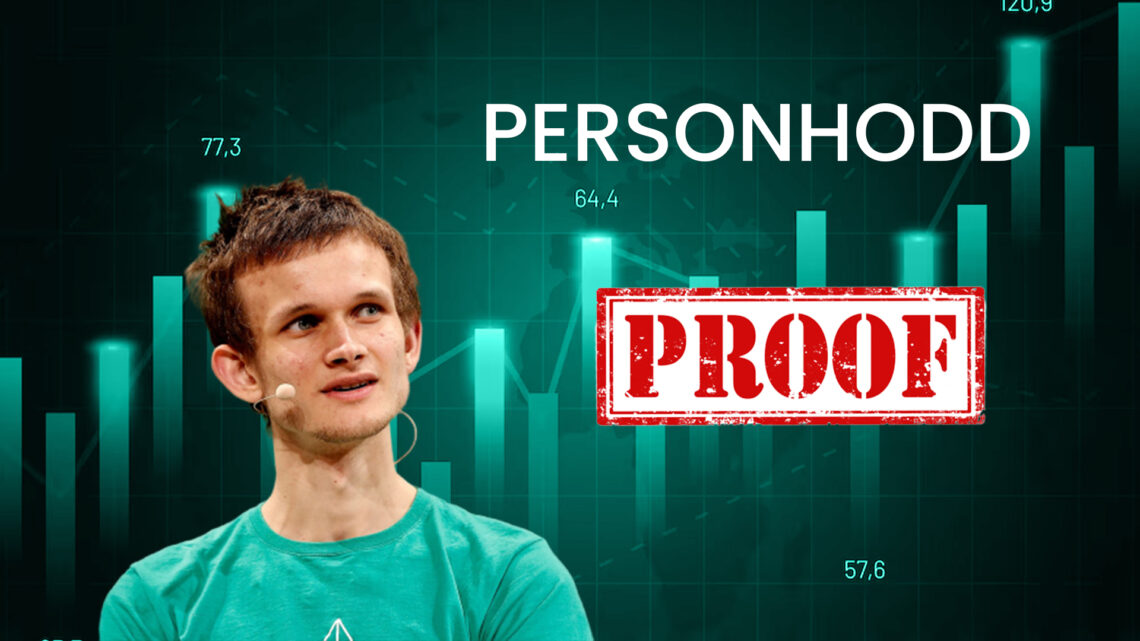- 1 Proof of personhood proposes novel crypto methods to differentiate real human users from bots.
- 2 proof of personhood remains largely theoretical. Progress demands resolving hard problems across security, ethics, and inclusion.
Proof of personhood is an idea by Vitalik Buterin, co-founder of Ethereum, to authenticate that online accounts are tied to real human beings rather than bots or duplicate identities. The essential premise is for individuals to sign cryptographic statements asserting uniqueness about themselves digitally.
Buterin’s Approaches and Challenges to Implementing Proof of Personhood
In a blog post, Buterin outlined some potential approaches to implementing proof of personhood using zero-knowledge proofs. One method would be to have users sign statements about unique attributes about themselves that would be difficult for bots to replicate, like “I am 1.7 meters tall” or “My mother’s maiden name is X”. The user would then generate a zero-knowledge proof to show they possess the secret attributes without revealing the actual attributes.
Another approach is to leverage social graphs, where users prove they have long-standing social connections to other verified humans. This aims to show that the user is part of an authentic social network, not just a fake account. For example, users could prove they have at least 50 social media connections and have been on the platform for over 5 years.
Buterin notes significant challenges around preventing Sybil attacks, where a single entity pretends to be multiple accounts. He suggests combining techniques like proof of uniqueness, proof of humanity, and social graph verification to make l attacks economically infeasible.
In general, Buterin views proof of personhood as a concept that is aligned with Web3 values of self-sovereign identity and preventing centralized platforms from exploiting user data. He believes new cryptographic techniques can balance privacy and verification goals. However, he acknowledges the risks of bias, exclusion, and other issues that must be worked out.
There are also criticisms of proof of personhood as being potentially discriminatory. Requiring verified personal attributes could marginalize vulnerable groups who struggle to provide government IDs or biometric data. The verification costs exclude people in developing nations needing more computing resources.
Lately, demand for proof of personhood has increased since Worldcoin started. A distinct human verifies their World ID on average every 7.6 seconds, and daily records are broken.
Since Worldcoin launched, proof of personhood demand has surged. On average, a unique human is now verifying their World ID every 7.6 seconds & new records are being set daily.
— Worldcoin (@worldcoin) July 28, 2023
Thank you for your patience with the project as more work is done to better meet worldwide demand. pic.twitter.com/gPmr0oQWCR
Conclusion
Proof of personhood represents an emerging concept that is well-aligned with Web3s ideals of decentralization and user-controlled identity. However, there are still significant barriers to a viable real-world implementation. As Ethereum co-founder Vitalik Buterin outlined, proof of personhood aims to validate that online accounts are tied to unique human beings rather than bots or sybils. This has obvious appeal for Web3 platforms looking to build trust and prevent fraudulent behavior. Buterin has proposed approaches like zero-knowledge proofs and social graph verification, which balance privacy and accountability.
Buterin acknowledges these challenges and cautions that community input will be essential to avoid exclusionary effects and bias. For the foreseeable future, proof of personhood will likely remain theoretical than practical. While the concepts are intriguing, much work remains across cryptography, governance, and inclusive ethics before proof of personhood can be responsibly implemented at scale. Any real-world application must carefully weigh benefits against potential risks of increased surveillance, discrimination, and digital inequality.

Adarsh Singh is a true connoisseur of Defi and Blockchain technologies, who left his job at a “Big 4” multinational finance firm to pursue crypto and NFT trading full-time. He has a strong background in finance, with MBA from a prestigious B-school. He delves deep into these innovative fields, unraveling their intricacies. Uncovering hidden gems, be it coins, tokens or NFTs, is his expertise. NFTs drive deep interest for him, and his creative analysis of NFTs opens up engaging narratives. He strives to bring decentralized digital assets accessible to the masses.


 Home
Home News
News






